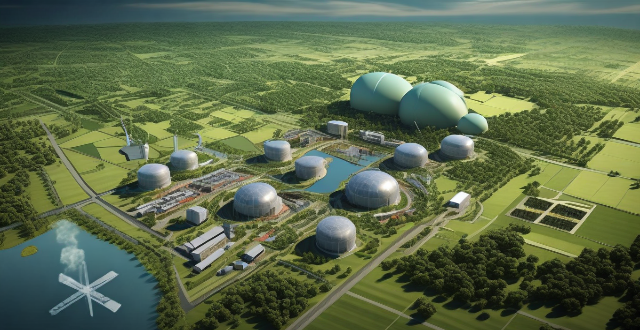Improving flood forecasting and early warning systems is essential for mitigating the devastating impacts of floods on human lives, properties, and ecosystems. Some strategies to enhance these systems include investing in advanced technology such as satellite imagery, hydrological modeling, and data analytics; improving data collection and sharing through the installation of more gauges and sensors, collaboration with other agencies, and crowdsourcing data; enhancing communication and dissemination of information by establishing multi-channel warning systems, creating community-based warning networks, and providing clear and actionable information; conducting regular maintenance and testing of infrastructure and conducting drills and simulations; and engaging stakeholders and building partnerships with local communities, academic institutions, and international organizations.

How Can We Improve Flood Forecasting and Early Warning Systems?
Improving flood forecasting and early warning systems is crucial for mitigating the devastating impacts of floods on human lives, properties, and ecosystems. Here are some strategies to enhance these systems:
1. Invest in Advanced Technology
- Satellite Imagery and Remote Sensing: Use high-resolution satellite imagery and remote sensing technologies to monitor weather patterns, water levels, and terrain changes in real-time. This can help identify potential flooding areas before they become hazardous.
- Hydrological Modeling: Develop sophisticated hydrological models that can accurately predict how much rainwater will flow into rivers, streams, and other bodies of water. These models should take into account factors like soil moisture, topography, and vegetation cover.
- Data Analytics and Machine Learning: Leverage data analytics and machine learning algorithms to analyze historical flood data, identify patterns, and make more accurate predictions about future flood events.
2. Improve Data Collection and Sharing
- Install More Gauges and Sensors: Deploy more river gauges, rainfall sensors, and other monitoring devices to collect data from various locations. This data can be used to calibrate hydrological models and improve flood predictions.
- Collaborate with Other Agencies: Encourage collaboration between different agencies, such as meteorological departments, geological surveys, and environmental organizations, to share data and resources. This can lead to better insights and more comprehensive flood forecasting.
- Crowdsource Data: Encourage citizens to report flood-related information through mobile apps or social media platforms. This crowdsourced data can supplement official sources and provide valuable real-time information during flood events.
3. Enhance Communication and Dissemination of Information
- Establish Multi-Channel Warning Systems: Use a combination of communication channels, including television, radio, SMS alerts, and social media, to disseminate flood warnings to the public. This ensures that the messages reach a wider audience and are not limited to one platform.
- Create Community-Based Warning Networks: Establish community-based warning networks where local residents are trained to recognize signs of impending floods and alert their neighbors. This decentralized approach can be particularly effective in remote or hard-to-reach areas.
- Provide Clear and Actionable Information: Ensure that flood warnings contain clear and actionable information, such as evacuation routes, safe locations, and emergency contact numbers. This helps people understand the severity of the situation and take appropriate measures to protect themselves and their properties.
4. Conduct Regular Maintenance and Testing
- Maintain Infrastructure: Regularly maintain and test the infrastructure used for flood forecasting and early warning systems, including sensors, gauges, and communication networks. This ensures that the systems are functioning properly when needed.
- Conduct Drills and Simulations: Periodically conduct drills and simulations to test the effectiveness of flood forecasting and early warning systems. This helps identify any weaknesses or gaps in the system and allows for improvements before an actual flood event occurs.
5. Engage Stakeholders and Build Partnerships
- Involve Local Communities: Involve local communities in the development and implementation of flood forecasting and early warning systems. Their knowledge of local conditions and experiences can contribute to the effectiveness of the systems.
- Partner with Academic Institutions: Collaborate with academic institutions to conduct research on flood forecasting and early warning systems. This partnership can lead to innovative solutions and advancements in the field.
- Work with International Organizations: Partner with international organizations like the World Meteorological Organization (WMO) or the United Nations Office for Disaster Risk Reduction (UNDRR) to share best practices, resources, and expertise in flood forecasting and early warning systems.